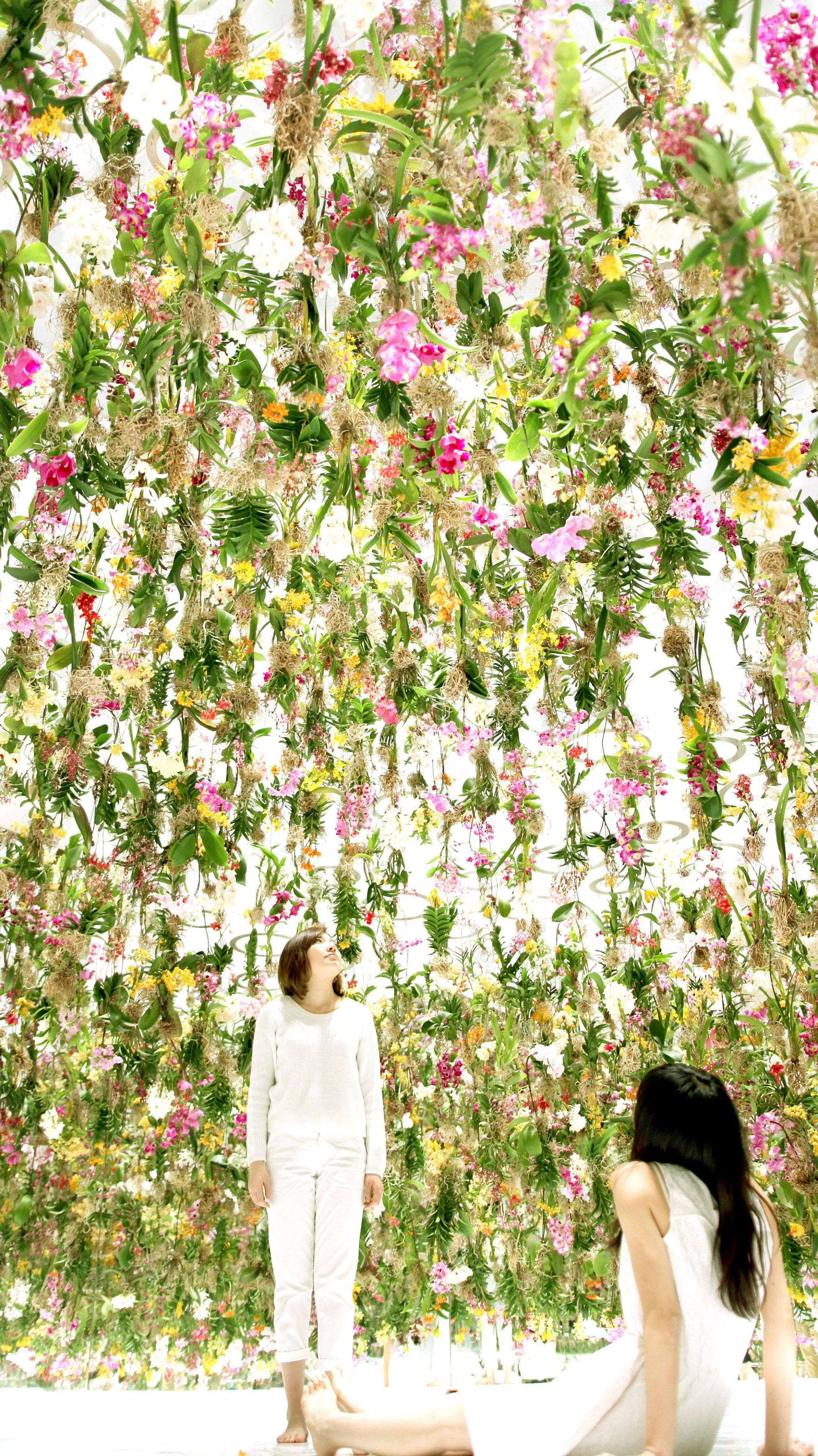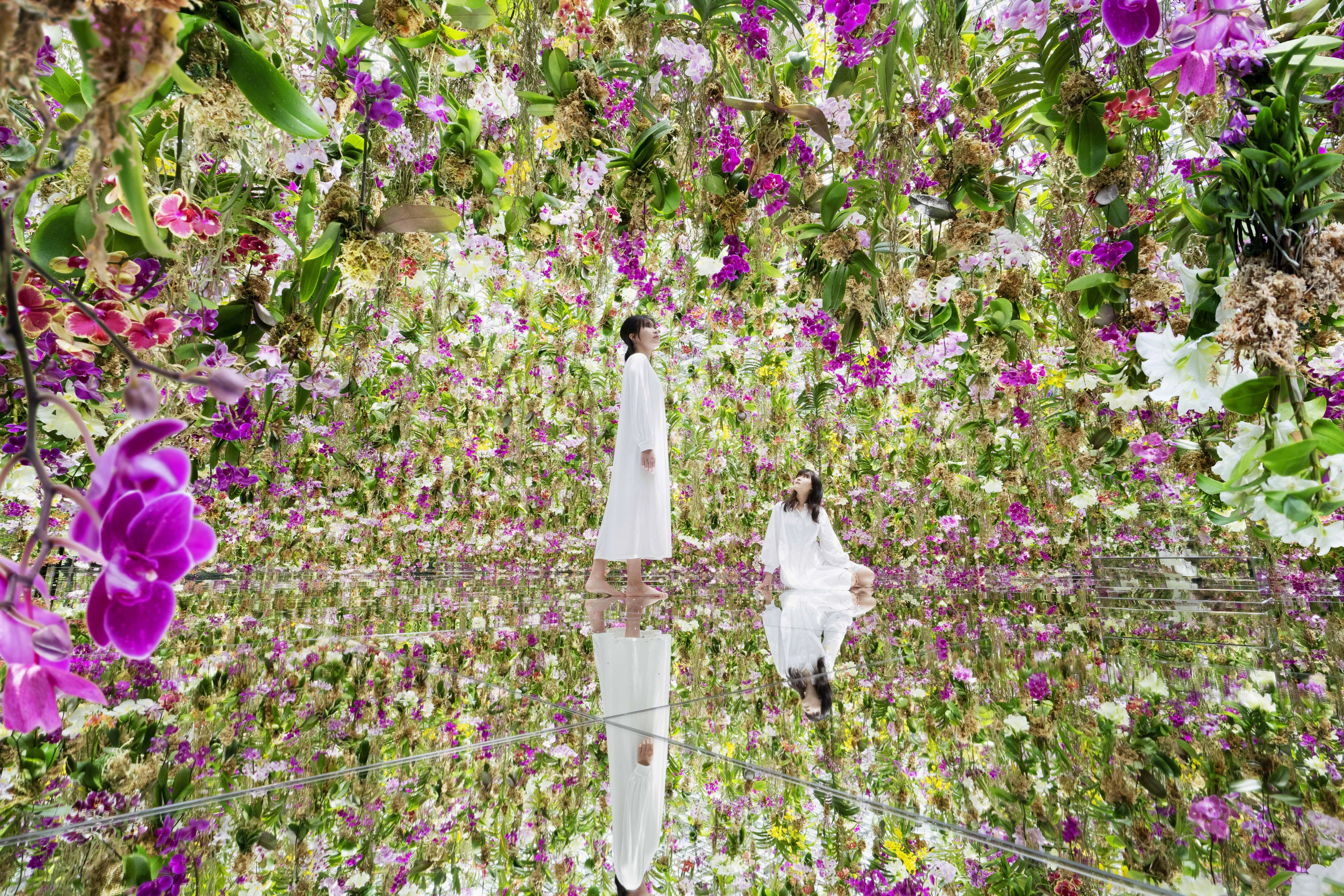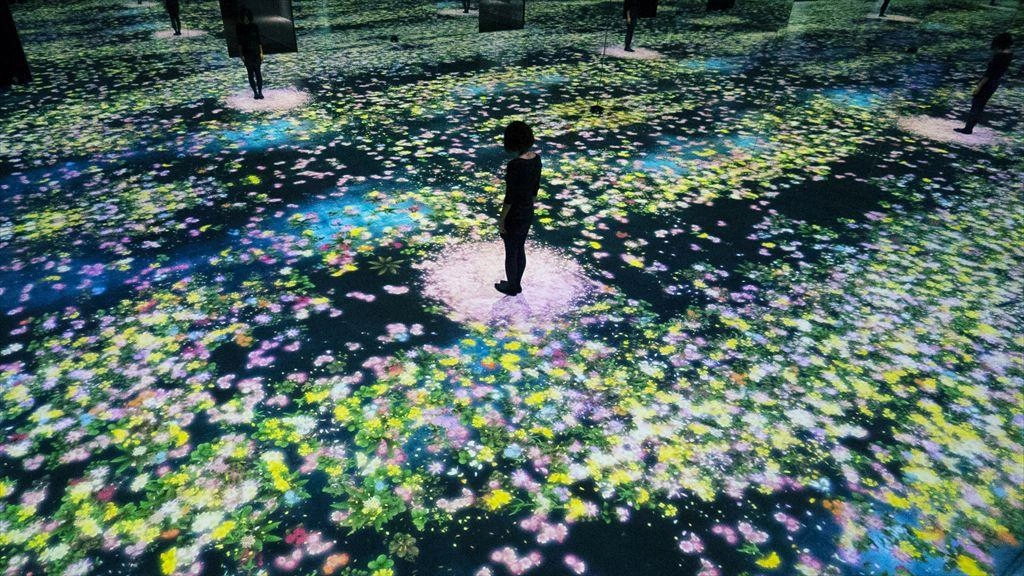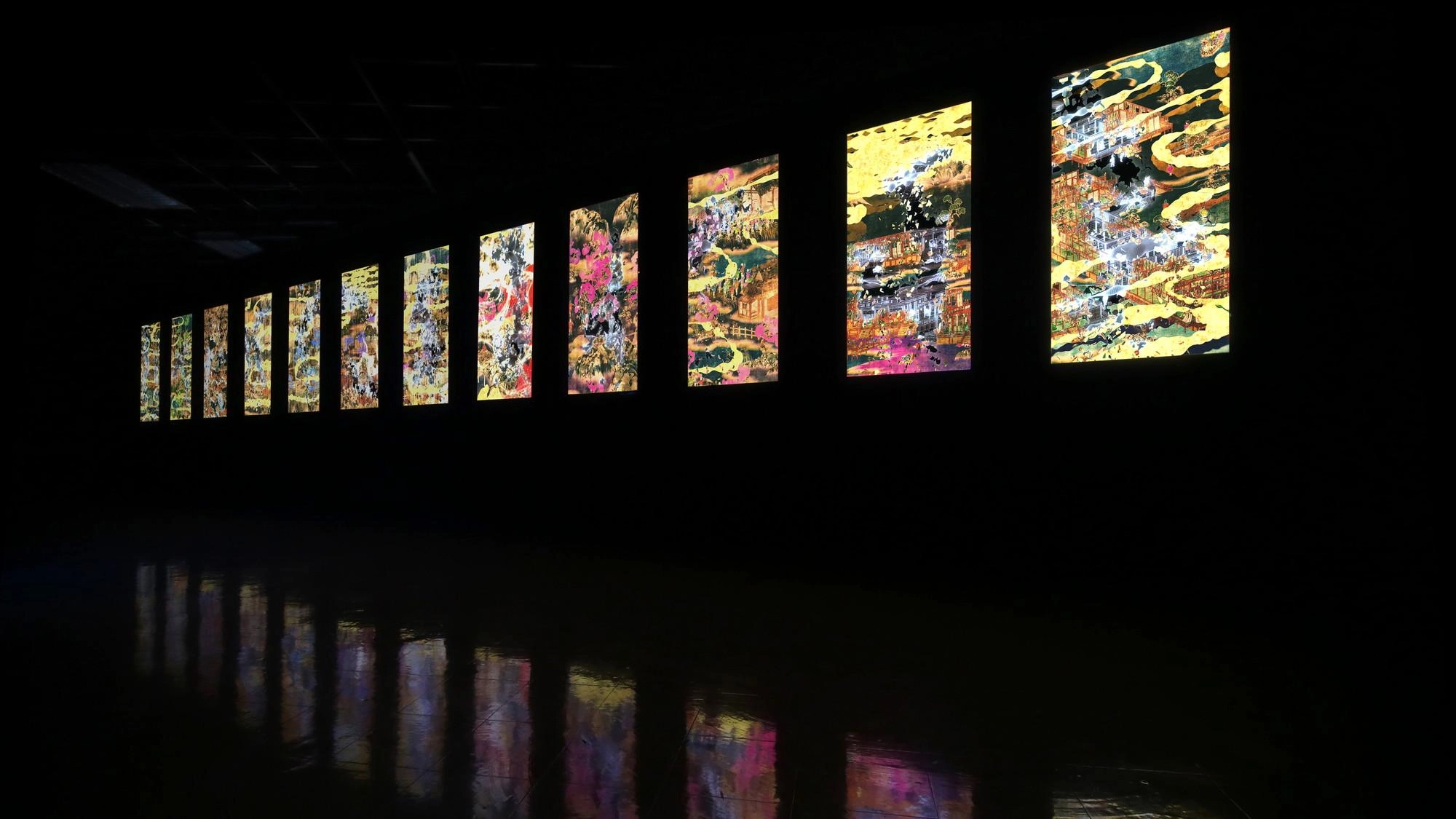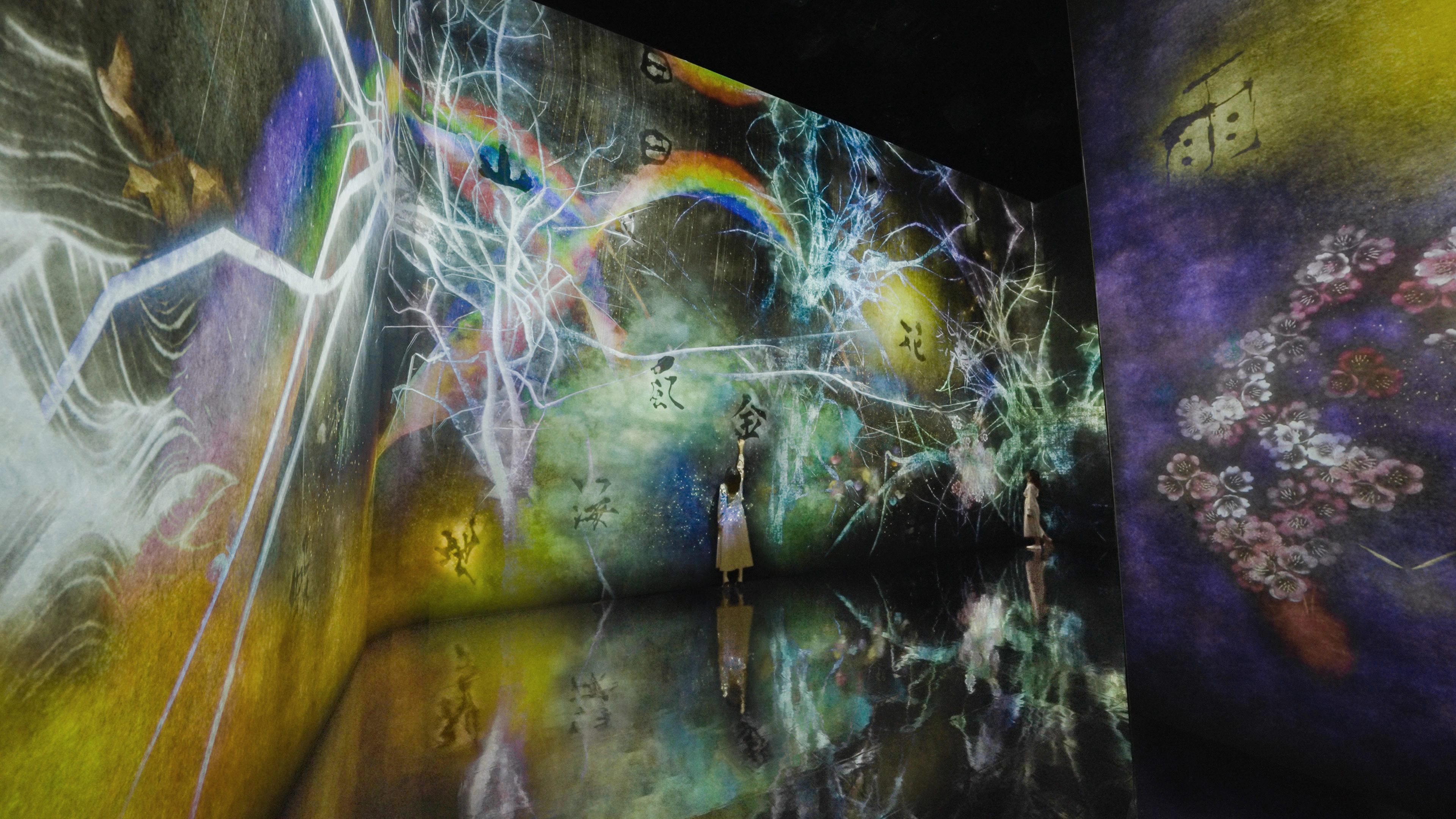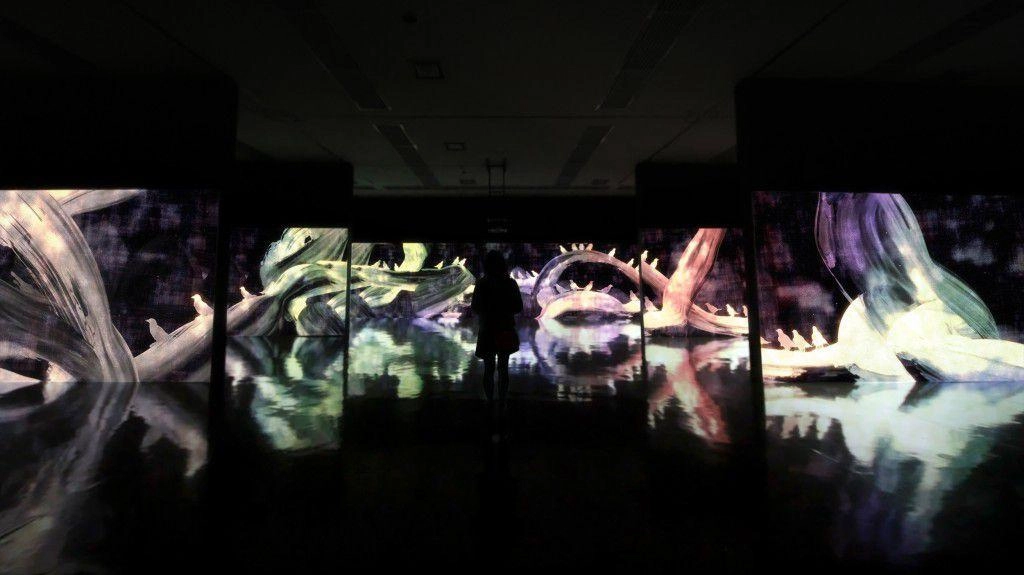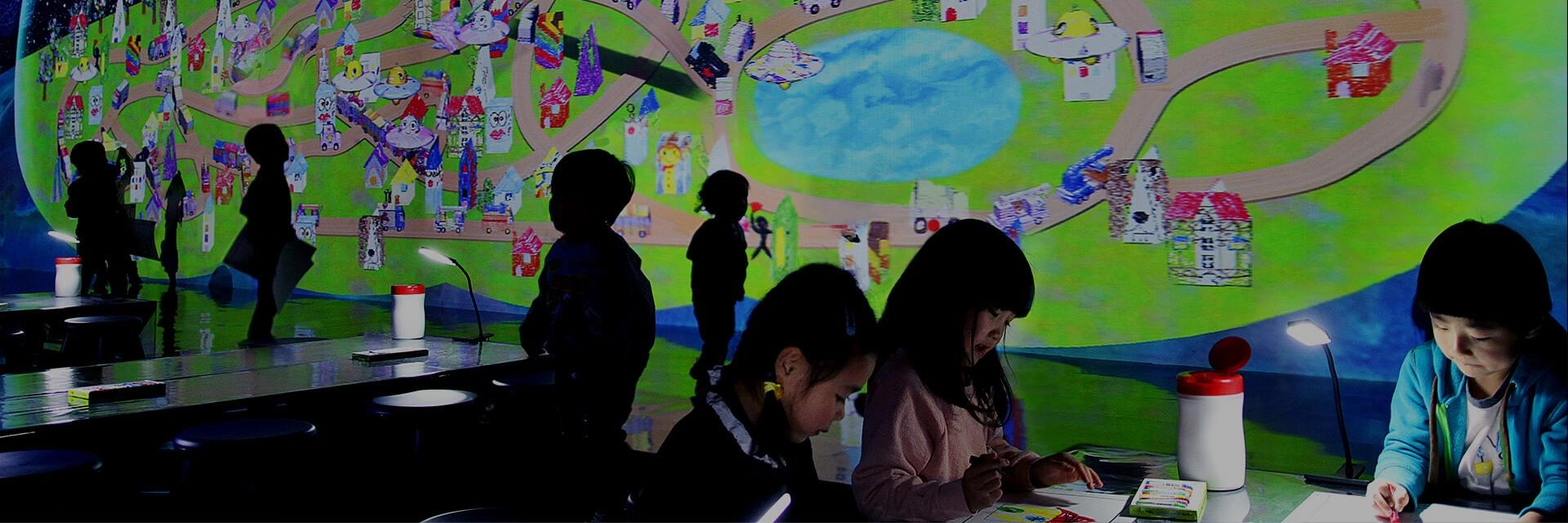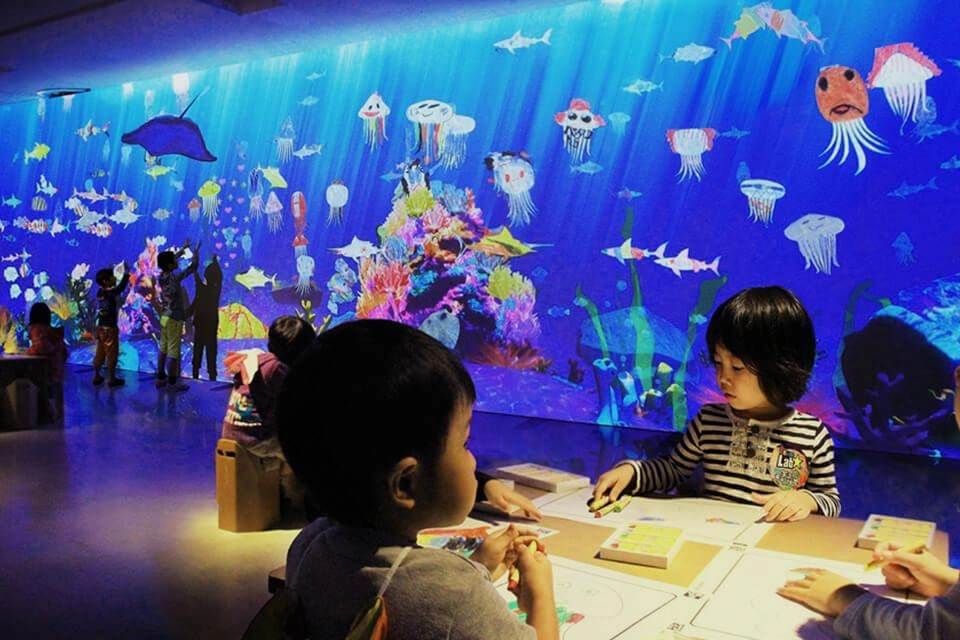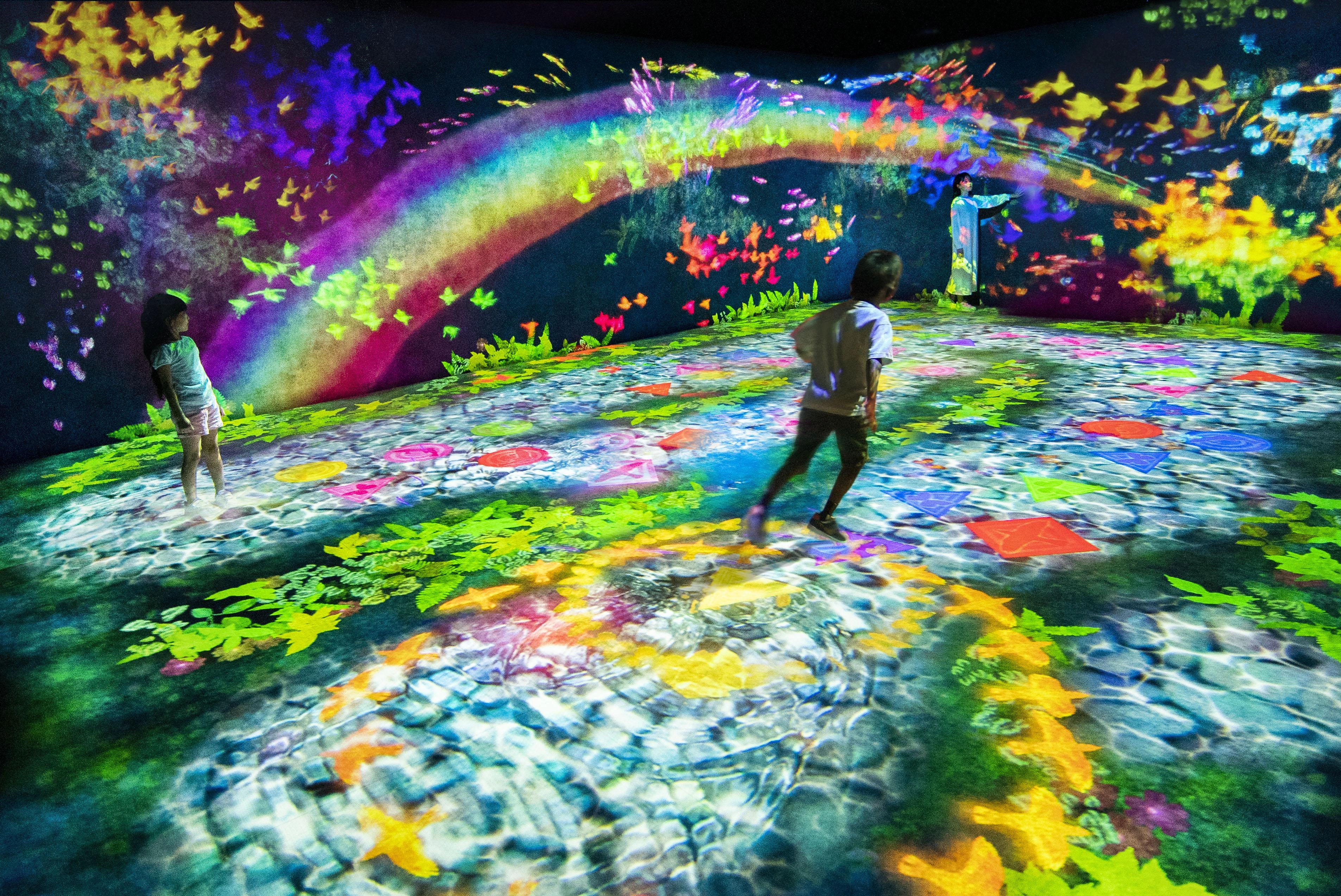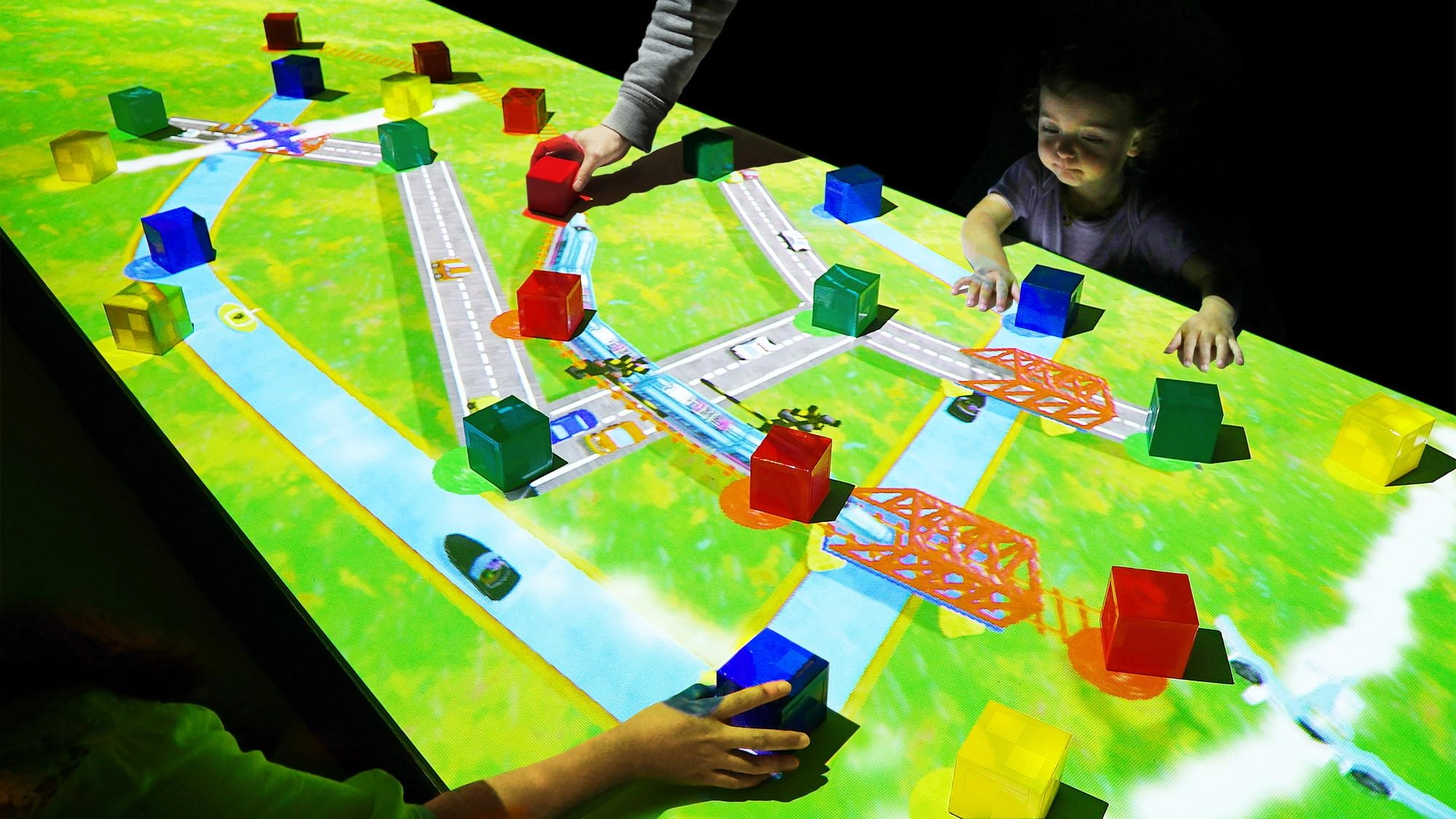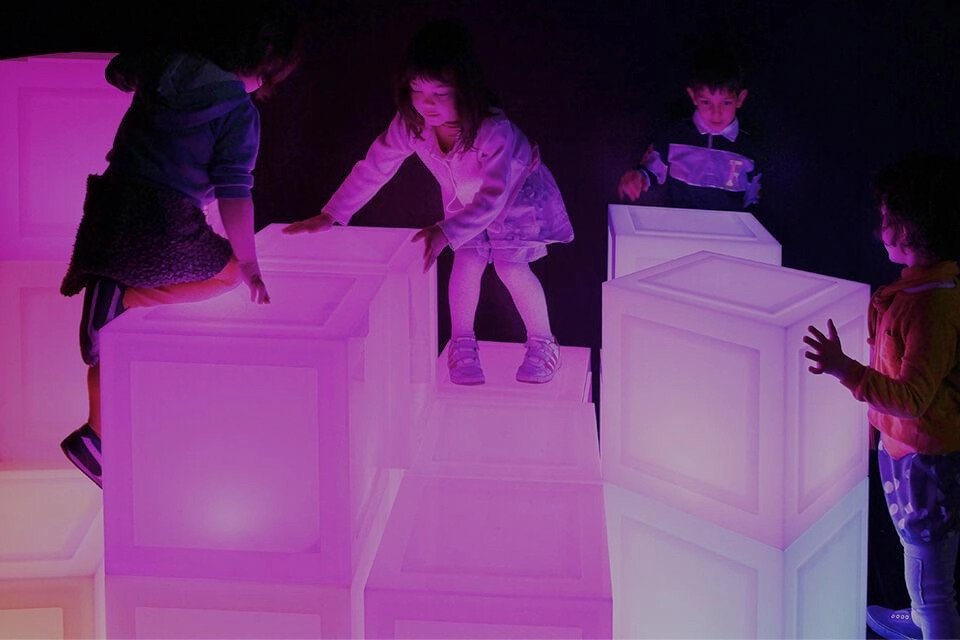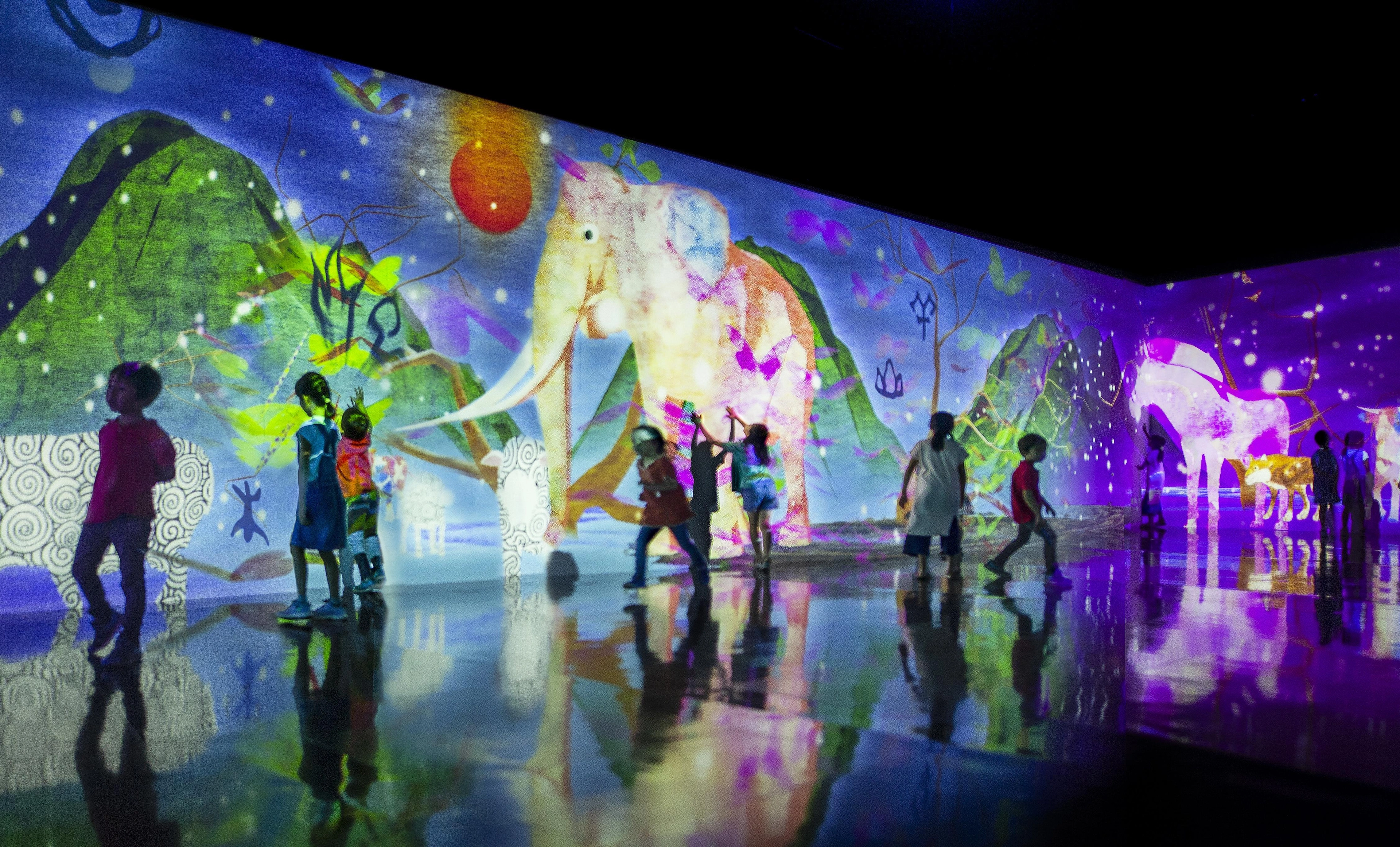teamLab Dance! Art Exhibition and Learn and Play! teamLab Future Park
Toshiyuki Inoko, President and CEO, teamLab
From spring to summer of 2012, teamLab held their first personal art gallery exhibition at the National Taiwan Museum of Fine Arts, featuring as many as 19 artworks and projects.
At the time I was surprised to see that, on weekends, the art museum welcomed a great number of visitors with children. Perhaps it was because parents had a strong desire for their children to experience modern art. And the children seemed to be running excitedly around the art gallery. Visitors must have felt that it was normal for children to run around art galleries; that is, a generally acceptable behavior. One of the artworks we exhibited provided a space for large amounts of people to interact with it. Many children gathered there, continuing to be loud and full of energy. The children worked together to participate in incredibly intellectual and creative experiences.
Seeing the children behave like this, one member of the teamLab group who normally shows little interest in art (teamLab members are very diverse, so we do have people like this... ) suddenly started saying that he would like his two children in Japan to have the same experience.
This is how teamLab’s “Learn and Play! teamLab Future Park” was started. We wanted to let children in Japan experience art as well, interacting in the same space with other people, working together to have a creative experience, in a space where they would be able to run around freely! These were our thoughts.
In line with this, at the same time, teamLab has also been holding exhibitions and showcasing art around the world as modern art. Humankind has incorporated the “digital” concept into their lives. We believe that this is not only based on the point of view of convenience or innovative costs, but also as a way to expand the concept of beauty.
For example, we believe that digital art will dramatically change the relationship between people and art. Rather than simply viewing it and feeling it, we can make changes to allow people to participate in it and experience it even more. And going further, people’s actual behaviors can also effect changes to the artwork itself. This instigates a change that goes from the relationship between individuals and artworks, to the relationship between groups and artworks. In this way, there is also an effect on the relationship between the people standing in front of the artworks.
In addition, it also expands the process for creating the artworks themselves. We use new methodologies based on digital techniques to try out new scientific ways for finding logical structures in space recognition of ancient Japan. We then reuse these to try out new visual experiences, raising questions about modern people’s perception of the world. This is because we believe that, in spite of humankind having been fostered for many years and because of its incompatibility with modern society, the ancient times may hold, among all that has been discarded, a variety of clues for completely new societies.
At any rate, we believe that expanding the concept of beauty through this new digital concept will greatly drive the values of humankind.
In summer of 2014, we were able to hold a personal art exhibition for the first time ever at the amazing Pace Gallery in New York, receiving great feedback and achieving great success.
And now, we have finally reached Tokyo. In Japan, this will be the first large exhibition held in one place under the teamLab name. And coincidentally, it is to be held at a National Museum as well. In actual fact, from the very beginning we had decided to put together and exhibit once more the artwork and amusement park that had originated right in the same place. In Japan, it is also acceptable for children to experience art and run around at art exhibitions. And it is fine for adults to do the same too, of course. That's right; everyone can experience art and dance around as they like. If everybody were to dance, surely art would dance as well.
Our great wish is for everyone, even adults on their own, to enjoy “Learn and Play! teamLab Future Park”. Why? Because we also want adults to work together and enjoy creative experiences. At times, they may even get mixed in with haphazard and random children who are overflowing with great creativity.
After all, to start with “Learn and Play! teamLab Future Park” was not actually created for children; we simply did it because we wanted to create something that we thought would be fun.
We are forever grateful to be given this opportunity. Thank you so much for all your continued support.
Shake and Learn in the Past and the Future
Mahoro Uchida, Miraikan National Museum of Emerging Science and Innovation
Mr. Inoko, CEO of teamLab, once said at a symposium, “All heavy things are unsophisticated”. “Scripts must not have a limited number of characters”. Apparently this is one of teamLab’s commandments (?). teamLab is an unusual group that scatters around the kind of lack of common sense that will make you think “huh?!” regardless of the field, whether it is business, advertising, and even public works, and regardless of space and size such as mobile, TV, Internet, towns, or airports. It appears freely here, there, and everywhere, providing us with intellectual stimulus and a lot of fun.
teamLab does not believe in thick and heavy materials created by modern society, nor in fixed formats, in terms of number of characters and the like. But rather, teamLab believes in mathematical algorithms that may continue on to eternity, relationships that continue to change based on other people, as well as ambiguous perspectives of time and space held by the Japanese people of ancient times. teamLab artworks have the amazing power to make us value the existence of each and every moment, each and every point, whether you are having fun moving your body, or staring intently at an image. As well as raising deep questions about the modern era, this might also be because these unique moments can make us feel a definite connection with those ancient times, as well as the future.
The role of art is to make us experience God (or something akin to a god) and raise questions, and the role of science is to pursue the truth and find answers to those questions. In Renaissance, where both of these concepts had the same meaning, the great masters Da Vinci and Michelangelo used art and science, that is to say beauty and knowledge, just like magic, creating order and generating deep emotions around the whole town, and leading people toward the future. At this exhibition, which spans across the realms of time, space, and material objects, it would make us very happy if you could join teamLab, as a modern Raphael based on the concept of “team = people” and “lab = studio”, to dance and learn, and create our future.
The Future is so Interesting and Beautiful
Gen Iwama, Project Producer, Nippon Television Network Corporation
teamLab shows us the future. An extraordinary, fun and snazzy future. A future that will make adults and children alike, whatever their age or gender, experience the same feeling of wondrous excitement. In order to reel this future in, they will jump easily over old-fashioned demarcations, boundaries, and genres. Regardless of whether it is science or art. So is it art or is it science? That really does not matter. Is it art? Is it play? Is it business? Or is it education? That is completely up to the viewers. teamLab provides creative experiences that are vivid and light. Maybe this used to be the role of television. That feeling of not knowing what would come flying out, giving us a great sense of excitement as if we were in a circus tent. teamLab has the magical power to envelop ordinary people in smoke, leading them to take a step into new worlds. As I gaze at their shiny silhouettes, I can sense that we are experiencing a historical moment as we stand in front of the gateway to the next generation. Yes, I am sure that is it. This group will be home to creators of new beauty and fun of a new era. As I think this, I feel slightly jealous. If I had been born 15 years later... I would have loved to join teamLab . This exhibition is sure to provide viewers with new experiences and new types of excitement. Please come to Odaiba and witness teamLab's extraordinary, snazzy, fun, and beautiful future.
